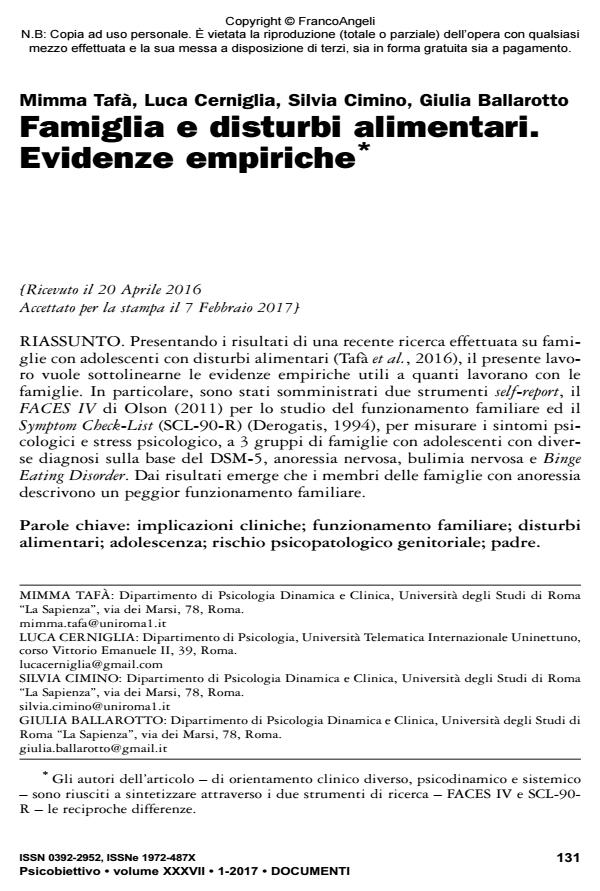Family and eating disorders. Empirical evidence
Journal title PSICOBIETTIVO
Author/s Mimma Tafà, Luca Cerniglia, Silvia Cimino, Giulia Ballarotto
Publishing Year 2017 Issue 2017/1
Language Italian Pages 20 P. 131-150 File size 752 KB
DOI 10.3280/PSOB2017-001010
DOI is like a bar code for intellectual property: to have more infomation
click here
Below, you can see the article first page
If you want to buy this article in PDF format, you can do it, following the instructions to buy download credits

FrancoAngeli is member of Publishers International Linking Association, Inc (PILA), a not-for-profit association which run the CrossRef service enabling links to and from online scholarly content.
In this contribution, the authors present the results of a recent study conducted in families with an adolescent suffering from eating disorders (Tafà et al., 2016) to underline empirical evidence relevant to those who work with families. In particular, to three groups of families with clinical adolescents affected by Anorexia Nervosa (N=50), Bulimia Nervosa (N=50) and Binge Eating Disorder (N=50) according to DSM-5 criteria, were administered two self-report questionnaires: Family Adaptability and Cohesion Evaluation Scale (FACES IV) (Olson, 2011) to assess family functioning and Symptom Check-List (SCL-90-R) (Derogatis, 1994), to measure psychological symptoms and psychological distress. The results showed that anorexic family members describe a worst family functioning.
Keywords: Clinical Implications; Family Functioning; Eating Disorder; Adolescent; Parental Psychopathological Risk; Father.
Mimma Tafà, Luca Cerniglia, Silvia Cimino, Giulia Ballarotto, Famiglia e disturbi alimentari. Evidenze empiriche in "PSICOBIETTIVO" 1/2017, pp 131-150, DOI: 10.3280/PSOB2017-001010